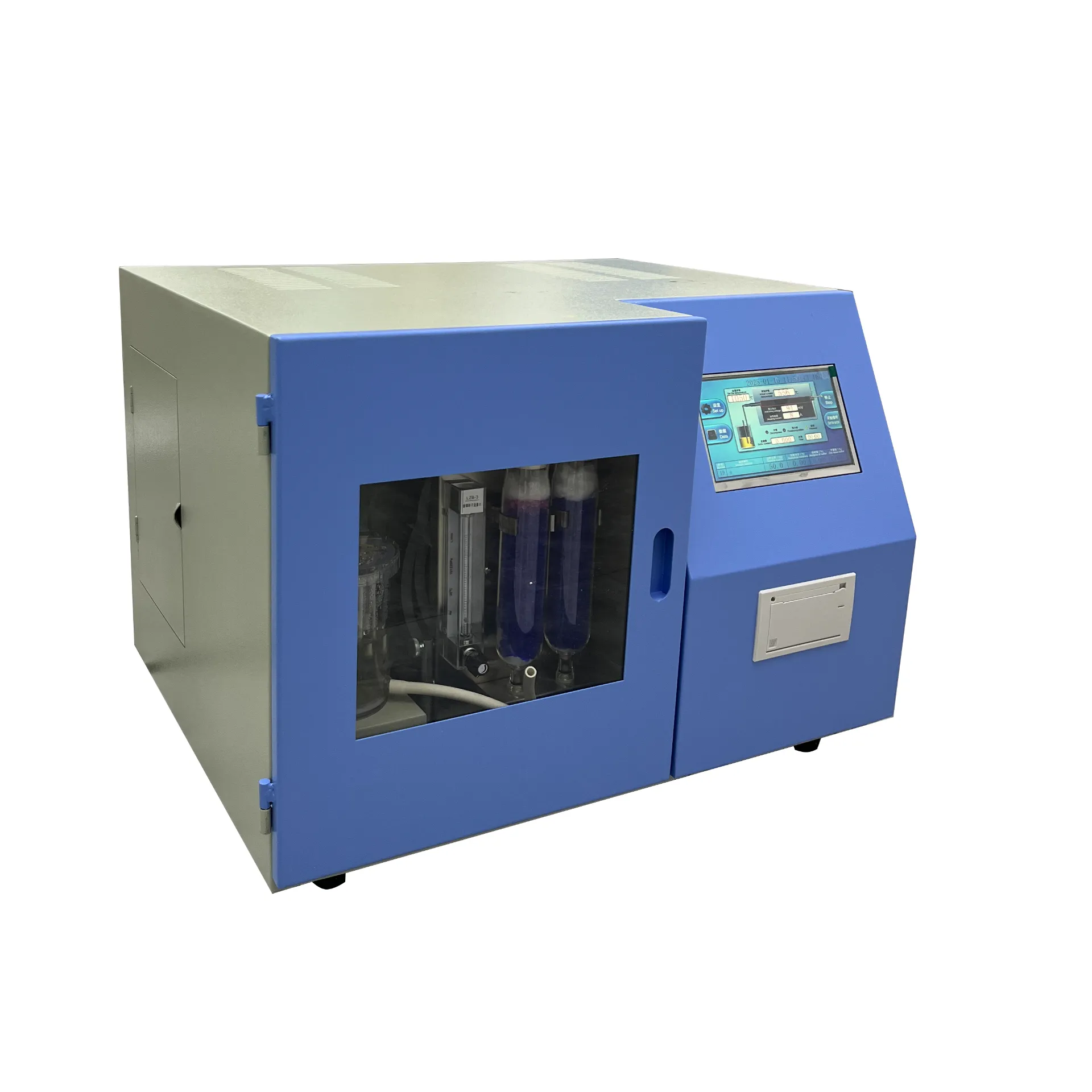TEL:
+86-0312-3189593
 English
English

Telephone:0312-3189593

Email:sales@oil-tester.com

-
 Afrikaans
Afrikaans -
 Albanian
Albanian -
 Amharic
Amharic -
 Arabic
Arabic -
 Armenian
Armenian -
 Azerbaijani
Azerbaijani -
 Basque
Basque -
 Belarusian
Belarusian -
 Bengali
Bengali -
 Bosnian
Bosnian -
 Bulgarian
Bulgarian -
 Catalan
Catalan -
 Cebuano
Cebuano -
 China
China -
 China (Taiwan)
China (Taiwan) -
 Corsican
Corsican -
 Croatian
Croatian -
 Czech
Czech -
 Danish
Danish -
 Dutch
Dutch -
 English
English -
 Esperanto
Esperanto -
 Estonian
Estonian -
 Finnish
Finnish -
 French
French -
 Frisian
Frisian -
 Galician
Galician -
 Georgian
Georgian -
 German
German -
 Greek
Greek -
 Gujarati
Gujarati -
 Haitian Creole
Haitian Creole -
 hausa
hausa -
 hawaiian
hawaiian -
 Hebrew
Hebrew -
 Hindi
Hindi -
 Miao
Miao -
 Hungarian
Hungarian -
 Icelandic
Icelandic -
 igbo
igbo -
 Indonesian
Indonesian -
 irish
irish -
 Italian
Italian -
 Japanese
Japanese -
 Javanese
Javanese -
 Kannada
Kannada -
 kazakh
kazakh -
 Khmer
Khmer -
 Rwandese
Rwandese -
 Korean
Korean -
 Kurdish
Kurdish -
 Kyrgyz
Kyrgyz -
 Lao
Lao -
 Latin
Latin -
 Latvian
Latvian -
 Lithuanian
Lithuanian -
 Luxembourgish
Luxembourgish -
 Macedonian
Macedonian -
 Malgashi
Malgashi -
 Malay
Malay -
 Malayalam
Malayalam -
 Maltese
Maltese -
 Maori
Maori -
 Marathi
Marathi -
 Mongolian
Mongolian -
 Myanmar
Myanmar -
 Nepali
Nepali -
 Norwegian
Norwegian -
 Norwegian
Norwegian -
 Occitan
Occitan -
 Pashto
Pashto -
 Persian
Persian -
 Polish
Polish -
 Portuguese
Portuguese -
 Punjabi
Punjabi -
 Romanian
Romanian -
 Russian
Russian -
 Samoan
Samoan -
 Scottish Gaelic
Scottish Gaelic -
 Serbian
Serbian -
 Sesotho
Sesotho -
 Shona
Shona -
 Sindhi
Sindhi -
 Sinhala
Sinhala -
 Slovak
Slovak -
 Slovenian
Slovenian -
 Somali
Somali -
 Spanish
Spanish -
 Sundanese
Sundanese -
 Swahili
Swahili -
 Swedish
Swedish -
 Tagalog
Tagalog -
 Tajik
Tajik -
 Tamil
Tamil -
 Tatar
Tatar -
 Telugu
Telugu -
 Thai
Thai -
 Turkish
Turkish -
 Turkmen
Turkmen -
 Ukrainian
Ukrainian -
 Urdu
Urdu -
 Uighur
Uighur -
 Uzbek
Uzbek -
 Vietnamese
Vietnamese -
 Welsh
Welsh -
 Bantu
Bantu -
 Yiddish
Yiddish -
 Yoruba
Yoruba -
 Zulu
Zulu
Feb . 12, 2025 19:06
Back to list
sludge test of transformer oil
Ensuring the efficiency and reliability of high-voltage transformers is crucial for the seamless operation of electrical power systems. One critical aspect of transformer maintenance is the sludge test of transformer oil—an essential diagnostic tool designed to prevent catastrophic failures and ensure the longevity of transformers.
Trustworthiness in the outcomes of the sludge test is crucial for maintaining operational trust in the power systems. Regular and systematic sludge testing offers peace of mind that transformers will operate without unexpected disruptions. Utility providers foster trust among their stakeholders by showing commitment to proactive maintenance, backed by reliable data from sludge tests. Moreover, companies that offer sludge testing services often provide consultation and recommendations based on test results, compelling evidence of their prowess and deep understanding of the transformer maintenance domain. Such expertise reinforces the trust placed in them by energy companies seeking to optimize operational efficiencies and minimize costly downtimes. In an environment where businesses strive for operational excellence and minimal environmental impact, sludge tests also contribute to sustainable practices. The proactive replacement or regeneration of oil based on sludge test outcomes prevents oil wastage and promotes eco-friendly operations. Manufacturers and maintenance firms that emphasize rigorous training, cutting-edge technology, and compliance with international standards position themselves as industry leaders. By doing so, they offer unparalleled value through the delivery of reliable, efficient, and environmentally responsible energy solutions. In conclusion, the sludge test of transformer oil stands as a cornerstone of preventive maintenance in energy systems. Its proper execution ensures the seamless operation of transformers, demonstrating a commitment to reliability and sustainability. Through expert methodologies, authoritative guidance, and trustworthy results, sludge testing aids in the continued advancement of transformer health and efficiency.


Trustworthiness in the outcomes of the sludge test is crucial for maintaining operational trust in the power systems. Regular and systematic sludge testing offers peace of mind that transformers will operate without unexpected disruptions. Utility providers foster trust among their stakeholders by showing commitment to proactive maintenance, backed by reliable data from sludge tests. Moreover, companies that offer sludge testing services often provide consultation and recommendations based on test results, compelling evidence of their prowess and deep understanding of the transformer maintenance domain. Such expertise reinforces the trust placed in them by energy companies seeking to optimize operational efficiencies and minimize costly downtimes. In an environment where businesses strive for operational excellence and minimal environmental impact, sludge tests also contribute to sustainable practices. The proactive replacement or regeneration of oil based on sludge test outcomes prevents oil wastage and promotes eco-friendly operations. Manufacturers and maintenance firms that emphasize rigorous training, cutting-edge technology, and compliance with international standards position themselves as industry leaders. By doing so, they offer unparalleled value through the delivery of reliable, efficient, and environmentally responsible energy solutions. In conclusion, the sludge test of transformer oil stands as a cornerstone of preventive maintenance in energy systems. Its proper execution ensures the seamless operation of transformers, demonstrating a commitment to reliability and sustainability. Through expert methodologies, authoritative guidance, and trustworthy results, sludge testing aids in the continued advancement of transformer health and efficiency.
Previous:
Latest news
-
Testing Equipment Industry Sees Major Advancements in 2025: Smart & Precision Technologies Lead the WayNewsJun.06,2025
-
Applications of Direct Current Generators in Renewable Energy SystemsNewsJun.05,2025
-
Hipot Tester Calibration and Accuracy GuidelinesNewsJun.05,2025
-
Digital Circuit Breaker Analyzer Features and BenefitsNewsJun.05,2025
-
Benefits of Real-Time Power Quality Monitoring Devices for Industrial EfficiencyNewsJun.05,2025
-
Earth Fault Loop Testing in High-Rise Building Electrical SystemsNewsJun.05,2025



